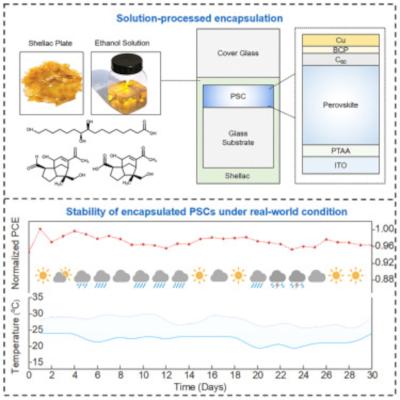A collaborative team of researchers, including ones from Uppsala University, CNR-SCITEC, Fraunhofer ISE, University of Cambridge, Empa, EPFL and additional institutes, recently introduced an unexplored dimethylphenethylsulfonium iodide (DMPESI) molecule to post-treat formamidinium lead iodide perovskite films. The treated films showed outstanding stability upon light soaking and remarkably remains in black-phase after 2 years ageing under ambient condition without encapsulation.
Fresh and 24-month aged unencapsulated perovskite film (1.0 cm by 2.0 cm) without and with DMPESI treatment of different concentrations. Image from Nature Energy
The DMPESI-treated PSCs deliver a breakthrough record in operational stability of highly-efficient PSCs with less than 1% performance loss after more than 4500 h at maximum power point tracking, yielding an extraordinarily high theoretical T80 of over 9 years under continuous 1-sun illumination, which would correspond to a photon flux of an outdoor PV installation in Sweden or Germany (1,000 kWh m−2 per year) of over 78 years.





